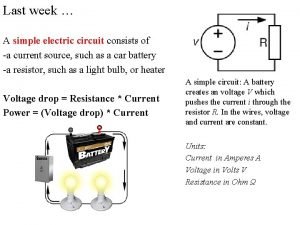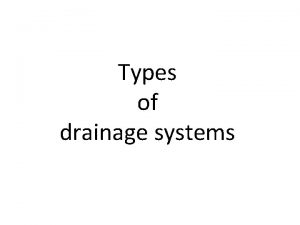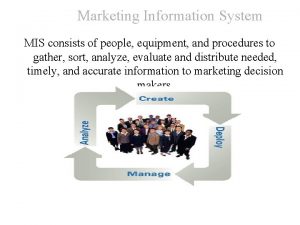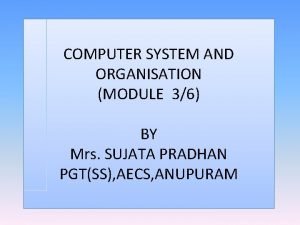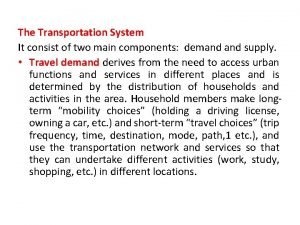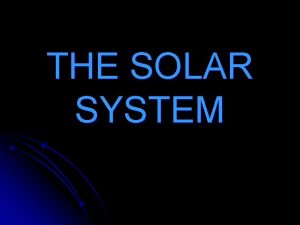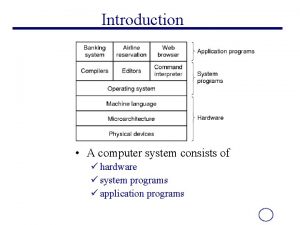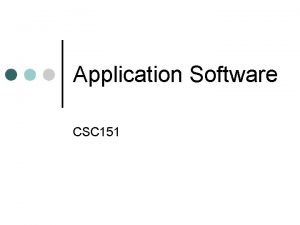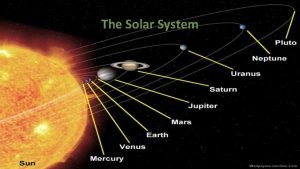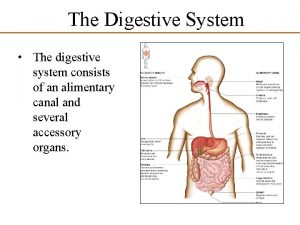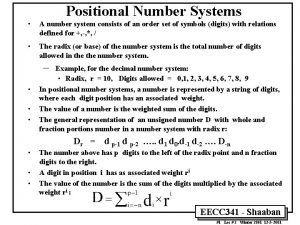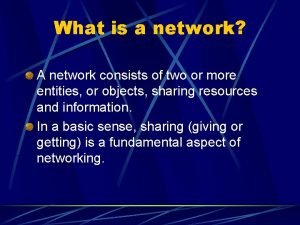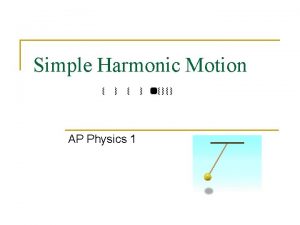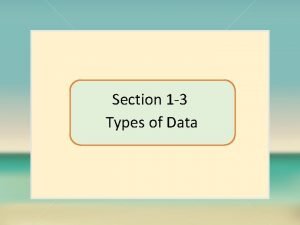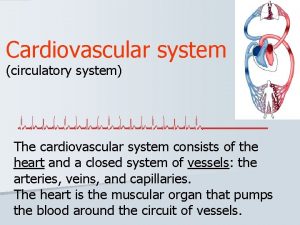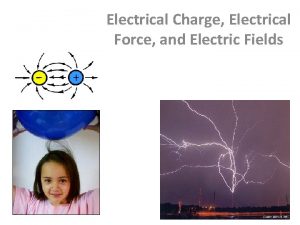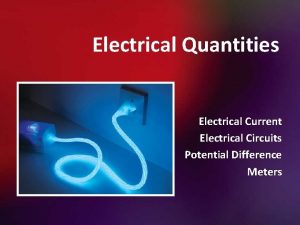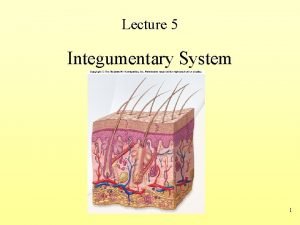ELECTRICAL SYSTEM Electrical System An electrical system consists






























- Slides: 30

ELECTRICAL SYSTEM

Electrical System An electrical system consists of an electrical power source, its power distribution system and the electrical load connected to that system.

A typical aircraft electrical system consists of a primary (main) power source, emergency power source, secondary power conversion equipment, system control and protection devices, interconnection network, and power distribution system. New-generation aircraft rely heavily on electrical power because of the wide use of electronic flight instrument systems

Electrical Power Uses Aircraft electrical power is used to operate: – Aircraft Flight Instruments – Essential Systems – Passenger Services

Electrical Power Uses ØRadio, radar and navigational equipment ØAircraft instrument, weapon arming and control system

Essential Systems • Essential power is power that the aircraft needs to be able to continue safe operation Ø Engine starting system Ø Selection and operation of hydraulic and pneumatic system and its associated indicators

Passenger Services n Passenger services power is the power that used for: n Cabin lighting n Operation of entertainment systems n Preparation of food

Primary Power Source A primary source is equipment that generates electrical power from energy other than electrical, and is independent of any other electrical source.

Secondary Source • A secondary source is equipment that transforms and/or converts primary source power to supply electrical power to either AC or DC powered equipment.

Ground power

ground power source l A ground power source can be connected to the bus bar distribution system thus allowing all electrical systems to be powered independently of aircraft battery or generating systems. The source can be either a motorised generating unit or a battery unit.

Condition of Power Sources n n n Normal electrical power operation Abnormal electrical power operation Emergency electrical power operation

Normal electrical power operation l Normal operating conditions assumes that all of the available electrical power system is functioning correctly within Master Minimum Equipment List (MMEL) limitations (e. g. AC and/or DC Generators, Transformer Rectifier Units, Inverters, Main Batteries, APU etc. ).

Abnormal electrical power operation l Abnormal operation occurs when a malfunction or failure in the electric system has taken place and the protective devices of the system are operating to remove the malfunction or the failure from the remainder of the system before the limits of abnormal operation are exceeded.

Emergency electrical power operation l Emergency operation is a condition that occurs following a loss of all normal electrical generating power sources or other malfunction that results in operation on standby power (batteries and or other emergency generating source such as an APU or Ram Air Turbine (RAT) only.

Requirement of Generator System Aircraft generator must be capable of operating with a high degree of reliability over a wide range of environmental conditions. It must be capable of maintaining: Ø A continuous power supply sufficient for the aircraft’s total power requirement. 1. A supply at the required voltage and, in the case of an AC generator, phase, regardless of the speed of the driving engine, and the loads imposed by the aircraft’s electrical equipment Ø 2. Aircraft electrical systems generate either AC or DC current; the choice between AC and DC is largely dictated by electrical equipment requirements and by the operating environment.

Basic DC Generator Circuit A V

DC Generator Components of DC Generator Circuit: a. Engine Driven Generator. The generator is driven by the aircraft engine through a suitable gear-box to give a working range from 3000 to 6000 rpm. The output is normally 28 volt at approximately 200 amps which corresponds to a power rating of 6 KW. a. Suppressor. The commutators of a DC generator produce interference which is detrimental to the efficient operation of the aircraft radio and radar services. Suppression is achieved by mounting the suppressor as close to the generator as possible, and usually inside the generator casing. Cont…

c. Voltage Regulator. The voltage regulator controls the generator output voltage within the close limits required by the electrical equipment. d. Monitoring. The performance and output of the generator are measured by the provision of voltmeters and ammeters

Components of DC Generator Circuit: e. Line Switch. The line switch is simply a manual switch or contactor which either makes the generator available for supplying the Bus Bar via the reverse current cut-out or takes the generator off lines, over-riding the cut-out. f. Reverse Current Cut-Out. (1) It disconnects the generator output to the bus bar whenever the voltage exceeds the bus bar voltage by a small amount provided that the line switch is made. (2) It disconnects the generator from the bus bar whenever a reverse current flows above a certain value. In some installations, reverse current flow is prevented by silicon diodes instead of mechanical cut-out. g. Bus bar. The bus bar is the main component in the distribution of main supplies.

Secondary Electrical Supplies A typical aircraft might require the following power supplies: a. 115 v, 1600 Hz, 3 -phase AC for Radar. b. 115 v, 400 Hz, single-phase AC for TACAN and compass system. c. 115 v, 400 Hz, 3 -phase AC for navigational equipment. d. 28 v DC for control circuit and data transmission system. e. 112 v DC for radar scanner drive.

Secondary Electrical Supplies

Motor Generator Group 1. Machines of this group consists basically of a motor driven by the aircraft main electrical supply; the motor in turn, drives a generator which has the required output: a. Motor Driving AC Generator. (1) DC Motor Driving AC Generator. This arrangement is called ‘INVERTER’ (2) AC Motor Driving AC Generator. This arrangement is used to change the frequency of the AC supply, (eg from 400 Hz to 1600 Hz) and the unit is called a frequency changer. Cont…

b. Motor Driving DC Generator. (1) DC Motor Driving DC Generator. This arrangement changes DC voltages and is called rotary transformer. (2) AC Motor Driving DC Generator. This arrangement can be used to obtain DC at any voltage from an AC supply and is called a rotary converter. Normally, DC is obtained from AC by rectification.

Static Group 1. By the use of static devices, rotational losses are avoided as well as some electrical losses, such as brush resistance losses. Devices in use at the present time are: a. Transformers. Single and three phase transformer can be designed to give an AC output of any voltage. Transformer with multiple output windings gives a selection of voltages which are frequently Cont… used.

b. Transformers Rectifier Unit (TRU). This is a combination of static transformer and rectifier for converting an AC input of one voltage into DC output at other voltage. c. Static Inverter. This unit performs the same basic function as the rotary inverter, but as much more efficient in operation (over 85%) and is more flexible in its AC frequency output.

Emergency and Standby Supplies Ø It is an essential safety requirement for all aircraft that they have an alternative source of electrical supply of sufficient capacity to energize essential services for a specified period in the event of complete failure of the main aircraft power supply. The emergency power supplies may be obtained from batteries, ram air turbines (RAT) or airborne auxiliary power plants (AAPP) depending upon the requirements of the particular aircraft.

Emergency and Standby Supplies Ø Aircraft Batteries. It has two main functions: Ø A source of emergency power in-flight Ø A source of power on the ground prior to engine/generator starting When the aircraft generator is on line, the battery receives a regulated charging current. Most common types are: q Lead acid and alkaline cell q Nickel-Cadmium (Ni-Cd) alkaline cell

Emergency and Standby Supplies Ø Ram Air Turbine (RAT). The RAT is an AC generator driven by ram air which is capable of supplying a limited 200 v, 400 Hz electrical supply in the event of total generator failure in flight. The output of RAT is fed directly to the synchronizing bus bar (Essential AC bus bar). The RAT is capable of supplying its full output within approximately two seconds of a selection being made.

Emergency and Standby Supplies Ø Airborne Auxiliary Power Plant (AAPP). The AAPP consists of a gas turbine driving an AC generator. It can supply the synchronizing bus bar with a 200 v, 400 Hz AC supply for use in emergency or for use on the ground when an external power unit is not available. During the period between total generator failure and an output becoming available from the AAPP, the essential electrical services are supplied by the RAT.
 Circuit symbols
Circuit symbols Two pipe system drainage
Two pipe system drainage Autonomic nervous system consists of
Autonomic nervous system consists of Components of marketing information system
Components of marketing information system Define number system
Define number system Reservoir system
Reservoir system Flaplike minivalve
Flaplike minivalve A transportation system consists of:
A transportation system consists of: What is the sun made up of
What is the sun made up of Computer system consists of
Computer system consists of Endocrine system introduction
Endocrine system introduction A computer system consists of both hardware and software
A computer system consists of both hardware and software Application software consists of
Application software consists of The solar system consists of
The solar system consists of Short tube that receives purified lymph
Short tube that receives purified lymph The digestive system consists of
The digestive system consists of Peripheral nervous system consists of
Peripheral nervous system consists of Youtub.eoc
Youtub.eoc The solar system consists of
The solar system consists of What is a positional number system
What is a positional number system Define marketing information management
Define marketing information management Introduction of mis
Introduction of mis The urinary system consists of
The urinary system consists of Work energy theorem
Work energy theorem The following are hot sandwiches except
The following are hot sandwiches except A network consists of
A network consists of Great britain consists of three parts
Great britain consists of three parts The human genome consists of
The human genome consists of Smear layer composition
Smear layer composition A slingshot consists of a light leather cup
A slingshot consists of a light leather cup It consists of numbers representing counts or measurements
It consists of numbers representing counts or measurements
